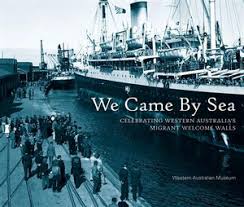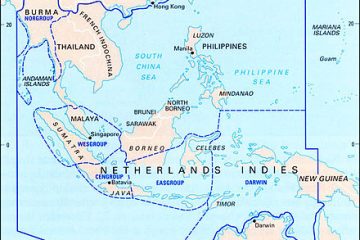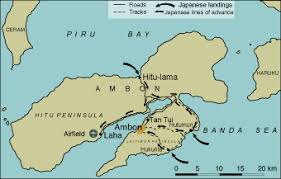[Cape Londonderry to Norman River]
Gulf of Carpentaria and Arnhem Land
The coast of Arnhem Land was mapped by the Dutch in the “Arnhem” skippered at that stage by Willem van Coolsteerdt in 1623 but there are no accounts of what transpired during that section of their voyage.
Voyage of Klein Amsterdam and Wesel 1636
Documentary Source other than original Journal
Antonio van Dieman, Phillip Lucasz, Artus Gysels and Jan van der Burch 1636
“Instructions for Commander Gerrit Thomasz Pool and the Council of the yachts Clein Amsterdam and Wesel”
in J E Heeres 1899
The Part Borne by the Dutch in the Discovery of Australia,
London: Luzac and Co., pp.64-7.
p.65
great kindness, wary caution, and skilful judgement; slight misdemeanours on the part of such natives, you will suffer to pass unnoticed
p.65
draw them [Aboriginal people] unto you and inspire them with aversion to our nation
p.66
You will not carry off with you any natives against their will
Tasman’s Second Voyage 1643
Documentary Source other than original Journal
Recorded by: Antonio van Dieman et al 1644
“Letter from Antonio van Dieman, Cornelis van der Lijn, Salomon Sweers, Paulus Croocq, Simon van Alphen”
in A J Tasman 1898
Abel Janszoon Tasman’s Journal, J E Heeres (comp. and trans.),
Amsterdam: Frederick Muller, p.156.
p.156 [large spacious bay or gulf]
having only met with naked beach-roving wretches, destitute of rice, and not possessed of any fruits worth mentioning, excessively poor, and in many places of a malignant nature …
Tiwi Islands and Coburg Peninsula
Voyage of Klein Amsterdam and Wesel 1636
Documentary Source other than original Journal
“Daily Register of Batavia – 6 October 1636”
in J E Heeres 1899
The Part Borne by the Dutch in the Discovery of Australia,
London: Luzac and Co., p.67.
p.67
he [subcargo Pietersen] has seen many fires and frequent clouds of smoke, but no natives, houses, prows or fruit trees
Journal – Pieter Pietersen
Recording Mariner: P Pietersen 1636
“Journal of a voyage to New Guinea, 1636”
in J E Heeres 1899
The Part Borne by the Dutch in the Discovery of Australia,
London: Luzac and Co., pp.68-71.
p.69 [14 June 1636, Melville Island/Coburg Peninsula]
We saw smoke, indeed, in many parts of the inland, but no natives, houses or vessels.
p.69 [15 June 1636, Melville Island/Coburg Peninsula]
In many places we saw great clouds of smoke landinward, but no fruit-trees, houses, vessels or natives;
p.70 [17 June 1636, Melville Island/Coburg Peninsula]
Up to now we have seen no men, vessels or houses;
p.70 [19 June 1636, Coburg Peninsula]
The whole day we saw a good deal of smoke landinward;
At sunset it fell calm … … Shortly after we saw two fires on the beach beyond the island.
p.71 [21 June 1636, Melville Island/Coburg Peninsula]
we have named this land Van Diemansland, we have seen no men, houses fruit-trees or prows …
Voyage of Nova Hollandia, Vossenbosch and De Waijer 1705
Documentary Source other than original Journal
Recorded by: H Swaardecroon, C Chastelijn, J S Craine 1705
“Report to Jan van Hoorn and Council of India, 6 October 1705”
in R H Major 1859
Early Voyages to Terra Australis,
London: Hakluyt Society, pp.165-173.
p.168 [Bathurst Island?, April 1705]
some of the natives were caught sight of, running away with their children and dogs, as soon as they perceived our countrymen
p.168-9 [Melville Island, 31 (sic) April 1705]
Between these two islands or headlands some natives were met by the men on the thirty-first (sic) of April, who did not retire, but ran hastily towards an eminence, and with signs and gestures attempted to drive them away … …
[3 ½ SENTENCES
p.169 seeing that our people could not be induced by their grimaces, violent gestures, yelling and flourishing of assegais [spears], and all kinds of weapons, to retreat from the shore, they were imprudent enough to throw some of their assegais, or rather sharpened sticks, at our men, with the intention of wounding and intimidating them, but their chief … being hit by a ball from the single musket which was fired at them in return, the rest began to run quickly away …
p.169 [Melville Island, May 1705]
when our people were on the point of departing Eight islanders attacked and wounded two sailors, with the hope of seizing their clothes, and that after having conversed with these men for weeks, eaten and drunk with them, visited them on board, and being allowed to examine everything with great admiration, after having received presents and also on their part regaled our people with fish and crabs
p.172 [“Martin van Delft Bay”, Port Essington, Coburg Peninsula, May 1705]
the inhabitants … attempted to tow the patsjalling [“Nova Hollandia”], while lying at anchor, with three little canoes
p.172 [vicinity of Croker Island, June? 1705]
the inhabitants became so accustomed to our people they assisted in procuring and carrying water
—————————————————————————
Forrest, P. 1995
The Tiwi Meet the Dutch: The First European Contacts,
Winnellie: Tiwi Land Council.
p.15 [Melville Island, 30 April]
An affray resulted, and about 14 or 15 men, seeing their hostile demonstration had not caused the Dutch to withdraw, began to ‘throw assegais or better sharpened sticks at our men’ A shot was fired and one of the ‘chiefs’ was hit.
Perhaps this incident, by demonstrating to the Dutch that the Tiwi would fight bravely and effectively in defense of their land, established a better basis for relations between the two groups. By forcing the Dutch to withdraw, the Tiwi had shown that they required to be treated with respect and caution. It seems that peace was made on a foundation of mutual respect, and that for the next few weeks there was considerable friendly contact. The wounded Tiwi man was assisted and bandaged, then stayed aboard one of the ships until the Dutch left Tiwi waters. Other Tiwi went aboard the Dutch ships, with gifts of fish and crabs, while the Dutch gave the Tiwi clothing and ornaments. Until the day of the seafarers’ departure it appears the Tiwi permitted the Dutch to land at will, to obtain fresh water, and to reconnoiter the hinterland.
Produced by Australia On The Map, Australasian Hydrographic Society


